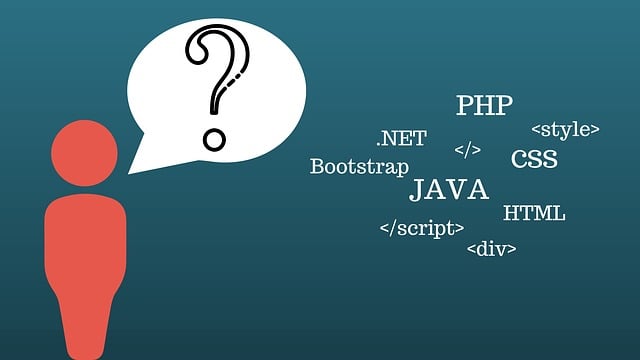When it comes to creating websites, things are always changing. To succeed in this field, you must always be aware of and adept at the most recent updates in web development. Any competent web developer should have a firm grasp of back end web development.
Back end development refers to that area. Server-side web development focuses on the back end of a website or application. Making a database, setting up a web server, and dealing with security issues all fall under this category. A website or application cannot operate effectively without certain supporting elements.
Back-end web development is something we’ll be covering in depth. We’ll start with the groundwork of back-end programming. This encompasses anything from programming languages to development environments. Also, we’ll be talking about some fundamental ideas. Web app programming interface (API) design and performance tuning are just a few examples.
What is Back End Development?

Back end web development for optimizing website faster.
To create a website, backend web development must be completed. Making and maintaining the backend infrastructure of a website or web app falls under this category. Setting up web servers and managing databases fall under this category.
Requests made by the front end of a web app are handled by the back end. When a user requests information, the back end will get it from the database and transmit it to the front end. It’s in charge of things like verifying users’ identities, checking data for errors, and running business logic.
A backend developer uses many different languages, frameworks, and tools. They may use it to construct and manage the back-end infrastructure of a website or app with ease. Python, Ruby, PHP, and Java are all common choices for back-end web development. Django, Ruby on Rails, and Laravel are three of the most well-liked frameworks for back-end programming.
What Skills Needed to Become a Back End Web Developer?
Becoming a back end developer requires a combination of technical and non-technical skills. It does not need any degree. If you want to become a web developer without a degree, we can help you. However, here are some of the key back end developer skills you’ll need to master to succeed in this field:
Skills in Back End Programming Languages

Skills in Back End Programming Languages.
Programming languages are an essential part of back end web development. They are the tools that developers use to write the code that powers web applications and websites. Here are some of the most commonly used backend programming languages in web development:
Python
Python is a high-level programming language that is known for its simplicity and ease of use. It is widely used in back end web development. This is for tasks like data processing, machine learning, and web scraping.
Ruby
Ruby is a dynamic, object-oriented programming language. We use it commonly in back end web development. It is the language used in the popular web framework Ruby on Rails.
PHP
PHP is a server side scripting language that is commonly used in web development. It is known for its ease of use and versatility. It is used in popular content management systems like WordPress and Drupal.
Java
Java is a general-purpose programming language that is widely used in web development. It is known for its reliability, security, and scalability, and is used to power many large-scale web applications.
JavaScript
While JavaScript is generally thought of as a front end programming language. It is also used extensively in backend development. Node.js is a popular platform for running JavaScript on the server side. Javascript is essential in back end web development.
Knowledge of Different Frameworks
Developers specializing in the back end of websites should know more than just one programming language. Simply said, a framework is a set of resources like code snippets and code libraries. The process of creating websites and apps is simplified as a result. The following are examples of popular backend development frameworks:
Django
As a Python web app framework, we use Django widely. It offers a powerful suite of features, such as database management, form processing, and URL redirection tools.
Ruby on Rails
Rails is the short name for Ruby on Rails. It’s widely used as a basis for Ruby web apps. It favors standardization over customization. It also facilitates rapid deployment by making it simple for developers to get started.
Laravel
Laravel is a popular PHP framework due to its clean syntax and user-friendliness. Authentication, routing, and caching are just some of the built-in services it offers.
Spring
Spring is a popular Java framework for building websites’ back ends. Access to databases, security, and time management are just some of the advantages it offers.
Express
Express is a widely used framework for creating Node.js-based web applications. With its straightforward approach to web server development, it’s a breeze to get up and running.
Working With Web Server and Database Management
Back end web developers need a strong knowledge of both servers and databases. Take a look at these specifics:
Web Server Management: Web server administration involves taking care of a server’s copy of a program used to host websites. Web page delivery is its primary function. Developers that work on the server side of things need to know their stuff. They also need to know how to set them up so that they function at peak efficiency. Some of the most important aspects of web server administration that back end engineers should know about are as follows:
Server Configuration
In order to do this, the web server software must be set up to function with a certain OS. It configures things like listening ports, passwords, and SSL certificates.
Managing Workloads
Distributing incoming web traffic means sending it to several different servers. It guarantees that even during peak times, the server won’t crash.
Protection for Servers

Cyber Security is more important thing for website’s safety.
It is imperative that back-end engineers have a solid grasp of web server security. SQL injection, cross-site scripting, and denial of service are only some of the assaults that need to be guarded against.
Database Management: In the context of database management, a database is any organized collection of data. Developers specializing in the back end of websites need expertise in database management and the usage of databases to power websites. Here are some of the most important aspects of database administration that back end engineers should know:
Database Design
It needs a plan to work the database’s structure. That consists of table rows, column headings, and cross-table associations.
Programming for Databases
The best back-end engineers know how to use a wide variety of languages and frameworks. This aids in gaining entry to and modifying databases. Database query language (SQL) and object-relational mapping (object-relational mappers).
Database Administration
This includes things like making regular backups, putting up security measures, and keeping an eye on database performance. It is essential in back end web development.
API Development
The ability to build APIs is another crucial skill for back end web developers. A programming interface is a set of guidelines for creating applications. It facilitates interaction between many programs. The steps involved in developing an API are as follows.
Interface Definition for APIs
At this stage, one should plan the API’s architecture. Everything from the starting points to the authentication methods to the request and response forms is part of this.
Application Programming Interface
Developers on the back end should be fluent in the languages and technologies used to create application programming interfaces. Node.js, Java, and PHP are just a few examples. They should also have a solid grasp of frameworks and the fundamentals of RESTful API architecture.
Interface Documentation
Developers on the back end should make sure the APIs they create are well documented. Endpoints, request/response formats, and authentication methods are all covered.
Analyzing APIs
Testing APIs is another important skill for back end engineers to have. This verifies their efficacy and that they are producing the desired outcomes. Postman and Swagger are two tools they should be comfortable with. This aids by API testing and documentation.
Problem Solving
To be a good back end web developer, you need to be good at solving problems. When you make a web app, you might face problems. You need to find ways to solve them. You have to solve problems if you want to learn back end web development.
One way to solve problems is to find out what is wrong with the code. Even small mistakes can cause big problems. You need to understand how the code works and use logical thinking to solve problems.
Sometimes you need to fix problems with the web server or database. You need to know how the web app works and use tools to find and fix problems.
Solving problems also needs creativity. You might need to think of new ideas to solve problems that are hard to fix. You also need to work with other people to solve problems together.
Technology changes quickly, and you need to keep up with new tools, programming languages, and ways to build web applications.
Learning to solve problems is important not only for building web apps but also for life in general.
How to Become a Backend developer?

Practice is the key of success for a back end web developer.
A back end developer is a type of software developer who specializes in building the parts of a web app. It stays on the back end so that the user doesn’t see it. The back end of a web application consists of the server, database, and application logic. Back end developers create and maintain these parts of the web application. This works together to ensure that the application functions correctly.
There are a few things you can do to start on your path to becoming a backend developer:
Learn To Code
You should learn programming language such as Python, Ruby, or Java. Online learning platforms such as Codecademy and Udemy are only two examples.
Learn About Databases
Databases such as MySQL, PostgreSQL, and MongoDB should be familiar to back end developers. Online classes and tutorials are great ways to gain knowledge in this area.
Learn About Web Servers
Acquire knowledge about servers. Servers like Apache, Nginx, and IIS are used to host websites and online applications. You’ll need to study the ins and outs of their operation and setup.
Choose A Framework in Back End Web Development
Web application development may be facilitated by using frameworks like Ruby on Rails, Django, or Spring Boot. You have to get good at using them.
Build Projects in Back End Web Development
Make little web application projects as practice. This is a great way to exhibit your abilities and build your resume.
Collaborate With Others
Participate in collaborative programming efforts with other programmers to gain experience and insight.
Stay Up To Date
Technology evolves rapidly, so it’s important to stay up with the latest developments. The best way to keep up with the current developments in web development is to subscribe to blogs.
Back End Web Developer Responsibilities

Back end web developers are working together and solving the back end problems.
A back end web developer is a computer specialist. They work behind the scenes to make sure that websites work smoothly. They are responsible for building and maintaining the parts of a website that users don’t see. For example, the server, database, and application logic. In back end web development, a backend developer has some duties and responsibilities.
To become a backend developer, you need to learn computer programming languages and how to work with databases. You’ll also need to be comfortable with problem-solving and troubleshooting. It’s your job to ensure the website works efficiently and is safe from hackers.
Working with front end developers, who create the parts of the website that users can see, is also an important part of a back end developer’s job. Together, they ensure the website looks good and works smoothly for users.
One of the key responsibilities of a back end developer is to create and maintain APIs. That allows different parts of a website to talk to each other. They also need to keep up to date with new technology and trends in backend development.
Back End Developers Job and Salary
Jobs for developers who work on the back end of a website are plentiful. The need for their expertise continues to rise. Expert back end developers that can build scalable, secure websites are in high demand.
Back-end developers’ salaries might range from $60,000 to $120,000 annually. This covers where they are, how long they’ve been in the industry, and who they work for. The average annual compensation for a back end developer in the US is close to $97,000. Developers with extensive expertise “Full stack developers” for example, might make $143,000 or more annually.
Backend developers can also find plenty of work as independent contractors or from home. This may provide them with greater leeway in their schedules. They can do their jobs from any location thanks to this.
The Bureau of Labor Statistics projects a rise in demand for web developers, leading to a rise in employment from 2023 to 2033. That’s a lot quicker than the typical growth rate across all industries. As a result, the need for back end developers is expected to remain high for the foreseeable future. So, do not worry about jobs. There are plenty of opportunities in back end web development.
Difference Between Frontend and Back end Web Development
When you use a website or app, you might not think about what’s happening behind the scenes. But there are actually two main parts to building these digital tools. Frontend and backend development.
Frontend developers focus on creating the parts of a website or app that you see and interact with. They use languages like HTML, CSS, and JavaScript. It makes sure that everything looks and works the way it should. They also use tools like React, Angular, and Vue.js to help them create more complex and dynamic interfaces.
Backend developers, on the other hand, focus on building the parts of a website or app that you don’t see. They’re responsible for things like databases, APIs, and other server-side functions. These functions work together to make sure the frontend can do what it needs to do. They use languages like Python, Ruby, and PHP to write code for the server side. They also use frameworks like Django, Ruby on Rails, and Laravel. It helps them work more efficiently.
Conclusion
Web development’s back end is where it’s at. It entails laying the groundwork for the technology that drives websites and software. Developers working on the back end deal with things like server maintenance, API management, and performance tuning. It guarantees the smooth operation of websites. One must be well-versed in many backend programming languages and frameworks to make a back end developer. One needs to have problem-solving abilities. Furthermore, remaining current with the most recent innovations and developments in your field is essential. It’s a great way to keep your edge in the employment market.
Back-end developers are in great demand. Future employment prospects will improve. A back end developer’s average income is quite enticing. That’s why it’s such a financially rewarding field of work. However, it’s not all about the money when it comes to becoming a back end developer. It’s also about enjoying new technological challenges and finding creative solutions.
